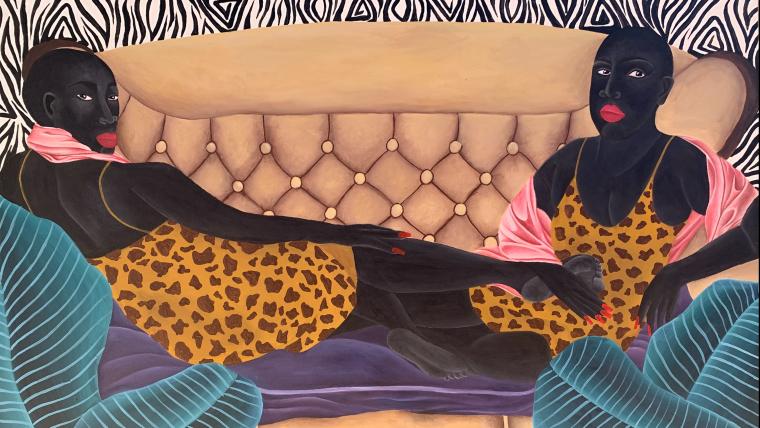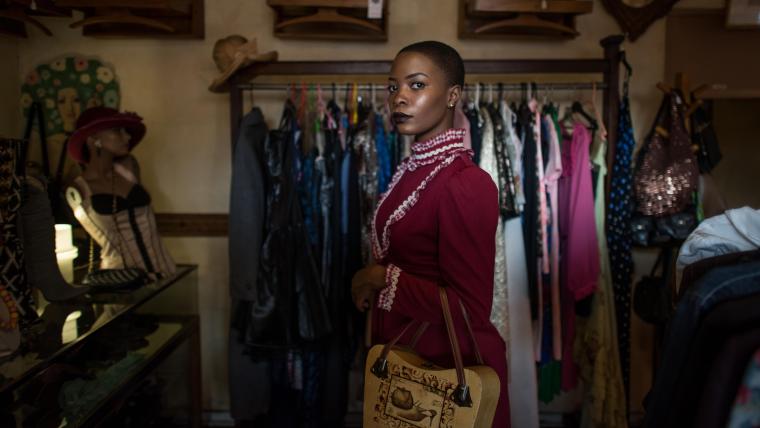
Challenging the canon of art history by centralising women of colour
In the history of art, white figures have always taken centre stage. But fine artist Zandile Tshabalala is repainting this story. To depict black women’s complexity and explore nuanced racial discourse, she reframes them in the leading role. “When we see women of colour in historical paintings, they’re often portrayed as inferior or invisible,” Tshabala says. Through an infusion of acrylic and oil paint, she creates a world where she gets to influence the narrative.
By challenging the canon of art history, Tshabalala is reintroducing black women. The exclusion of women of colour in earlier work fuels Tshabalala’s need to educate and highlight who they are, their roles, and how that has come to evolve. Her response is a departure from the conventional depictions of black women as subordinate and undesirable. Inspired by her own experiences, Tshabalala presents dark-skinned women with an aura of pride and sensual energy. “I started creating women that are bold and confident and very in touch with themselves,” she says. Some of these women are adorned in fur coats, while others recline on chaise lounges and duvets. The common image of black people as servants in historic artwork motivated Tshabalala to normalise black women resting. Through a process of layering images of different spaces and foliage, she creates dream-like utopias for her figures to be illuminated in.
Tshabalala’s work is more than a celebration of black women, it’s a visual protest that centralises them. Reflecting femininity from a progressive lens, Tshabalala situates black women in the very landscapes they were previously excluded from, imbuing them with self-love and ambition. “When I look at my work I feel very proud to say that I’m evolving toward the woman I’d like to be, one canvas at a time,” Tshabalala says.






























Please sign in to leave a comment